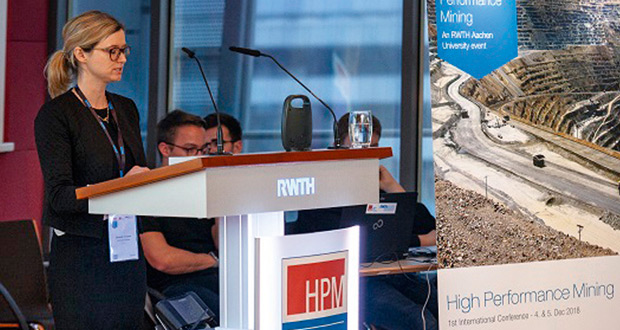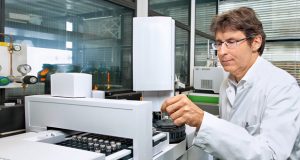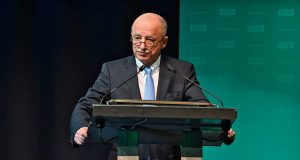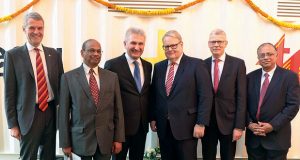On 4th and 5th December 2018, experts from industry, academia and leading industry associations came together on the premises of RWTH Aachen University to commence a dialogue on success factors for high performance mining. The conference was hosted by the Institute for Advanced Mining Technologies (AMT) at RWTH and was supported by VDMA Mining as co-organizer.
It was the first event in Aachen with a focus on high performance mining. In total, the event attracted 175 registered participants, including 21 speakers and 16 exhibitors, from 22 different countries. This indicates clearly that the conference struck a nerve internationally. The main intent of the event was to facilitate a dialogue and active exchange between mining suppliers, technology providers, and international mining companies as well as between industry and research. Especially mining companies appreciated the non-commercial nature of the event that focused on engaging in a sustained objective dialogue.
The 15 presentations delivered over the two days shed light on various aspects of modern high performance mining along the two dimensions human factor and application of technology. Prof. Elisabeth Clausen emphasized the importance of considering both dimensions simultaneously already in the opening speech (Figure 1).
It was therefore the explicit intent of the organizers to take a comprehensive view on the topic of mine productivity. How was a Scandinavian mine able to become the most productive open cast mine in the world in the area of base metals? How is it possible to quadruple the production rate in an underground mine without buying a single new machine? How is it possible to switch a running open cast operation from truck and shovel to a continuous mining system? Why do boards of directors with higher female percentage have such a positive impact on productivity and the bottom line of companies? The international speakers discussed these and many other questions.
The future goal of mining clearly aims at improving productivity, and, at the same time, fundamentally transform mining as an industry to make it more efficient, environmentally compatible and a more attractive employer that also attracts women and the generation Y, e. g. This transformation goes beyond digital workspaces, where machines are controlled from thousands of kilometers away, and also includes how companies deal with sustainability challenges, how they attract and keep talent, and how they deal with the opportunities and challenges around diversity and inclusion.
German suppliers or equipment and technology are well positioned to address the technical dimension of increased productivity. VALE delivered one of the presentations that clearly showed how much in demand they are in the implementation of large-scale international transformation projects. Three leading German technology providers played a crucial part in the success of the largest mining investment project in Brazil.
Especially against the backdrop of the end of coal mining in Germany success stories like these has the VDMA and others look hopeful towards the future. The German mining supply industry is already well positioned, with an export ratio of over 90 %, however, it will have to focus even more on international exports in the years ahead. (Aarti Mona Sörensen (RWTH)/Si.)



